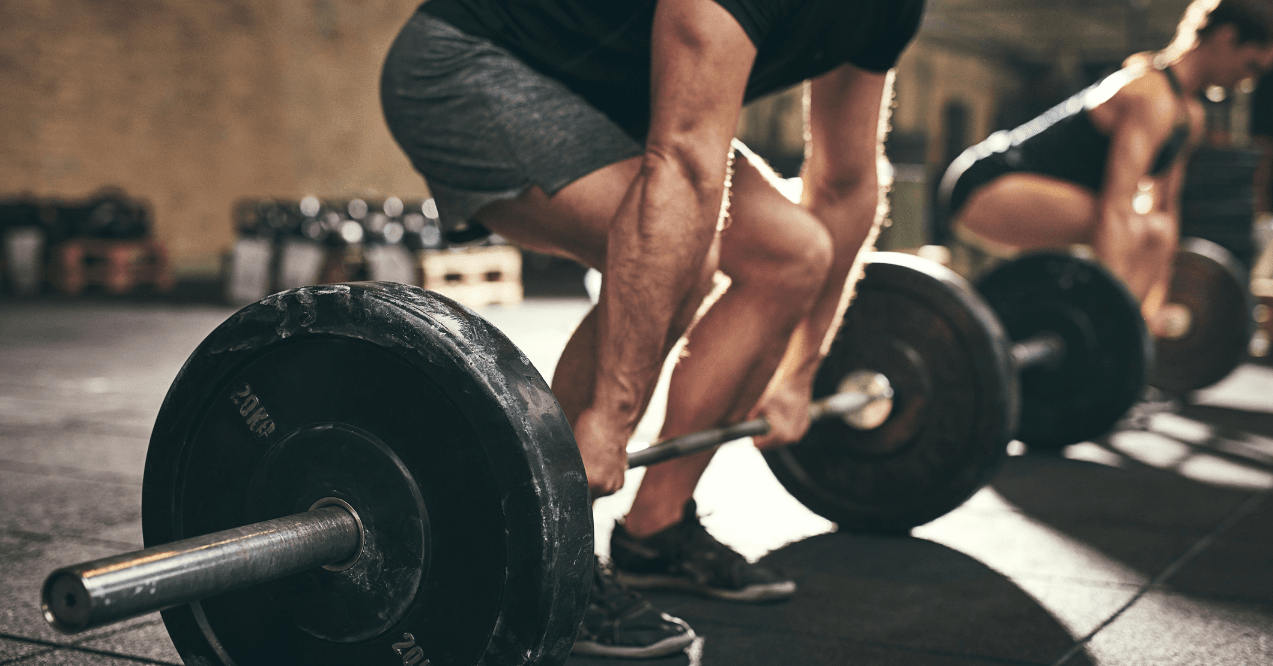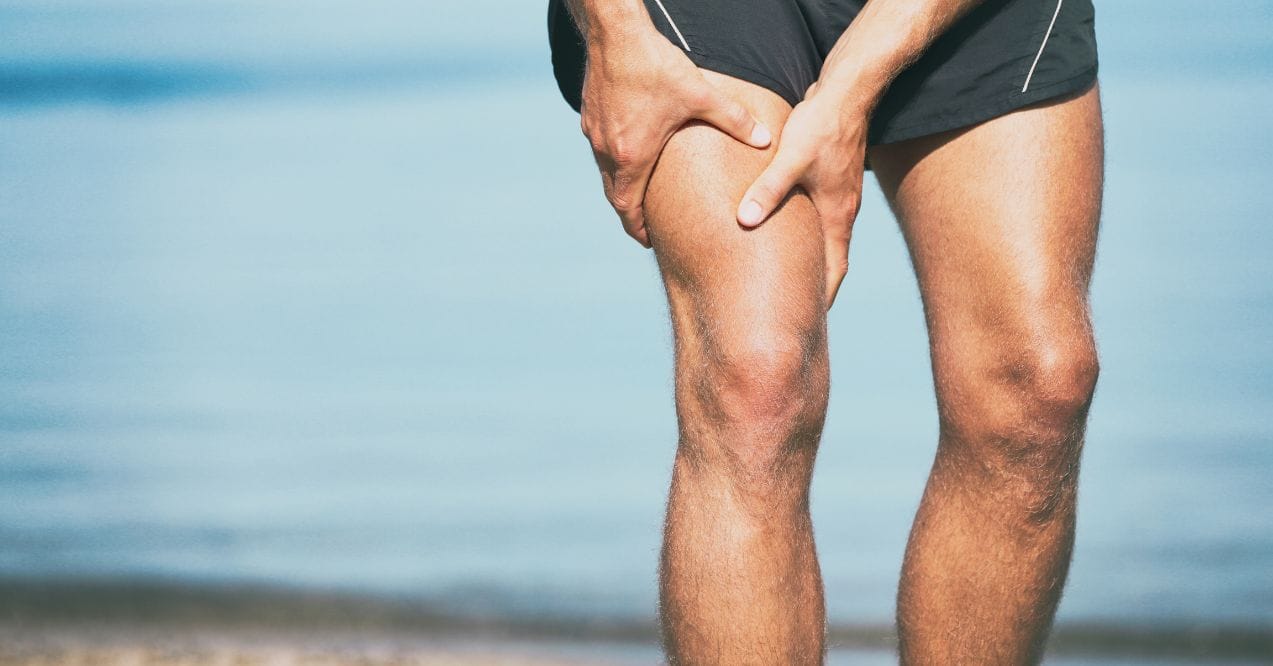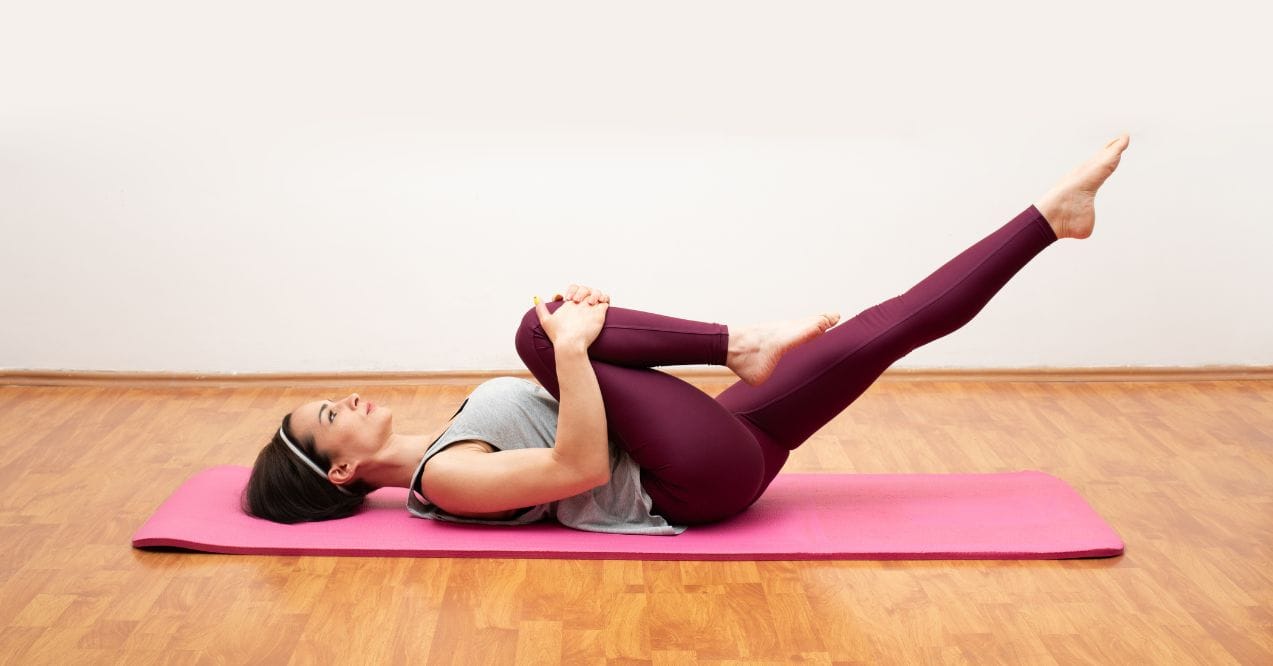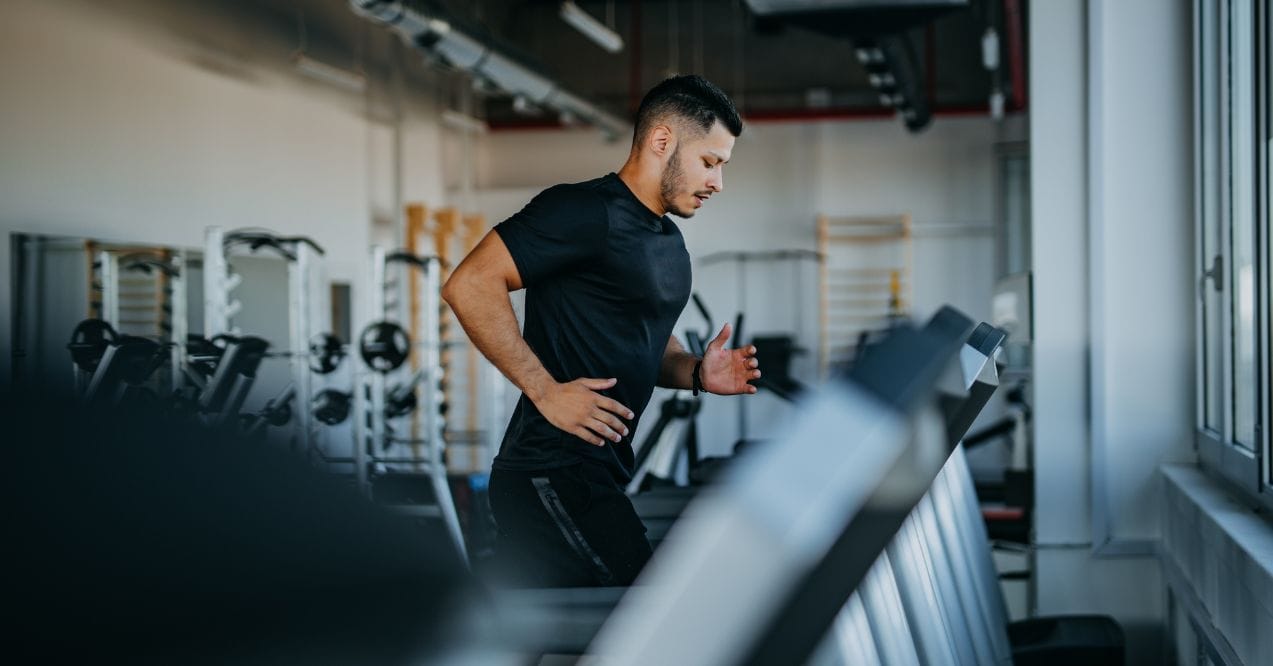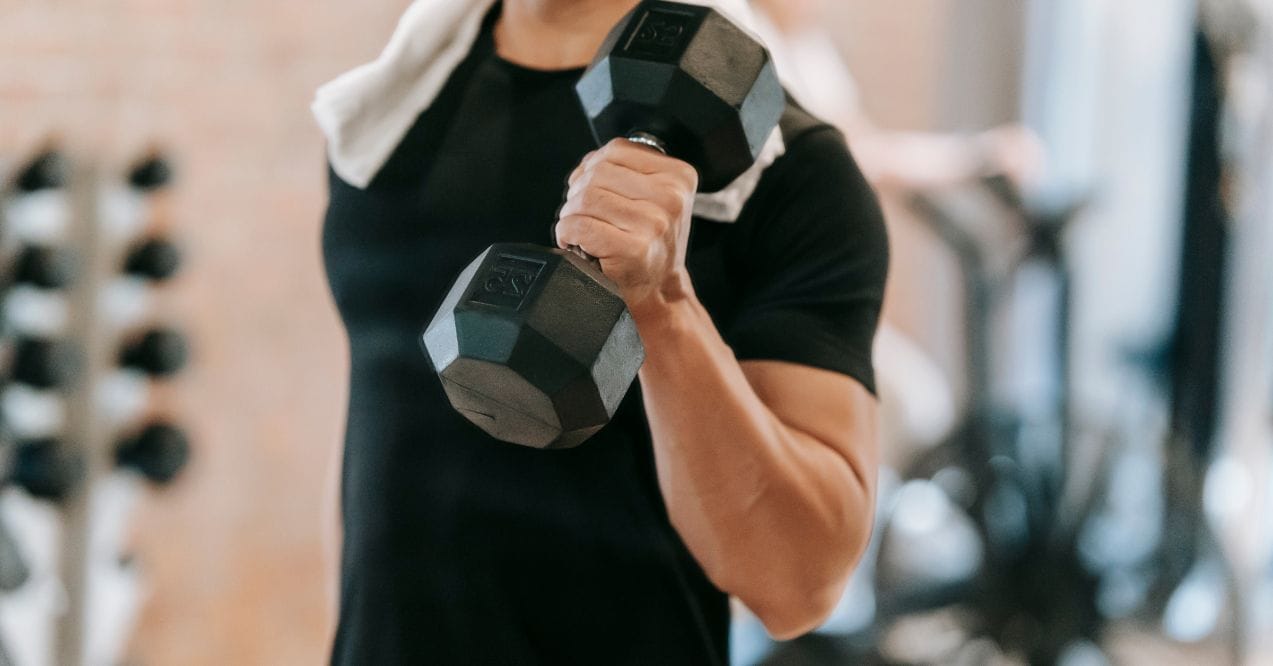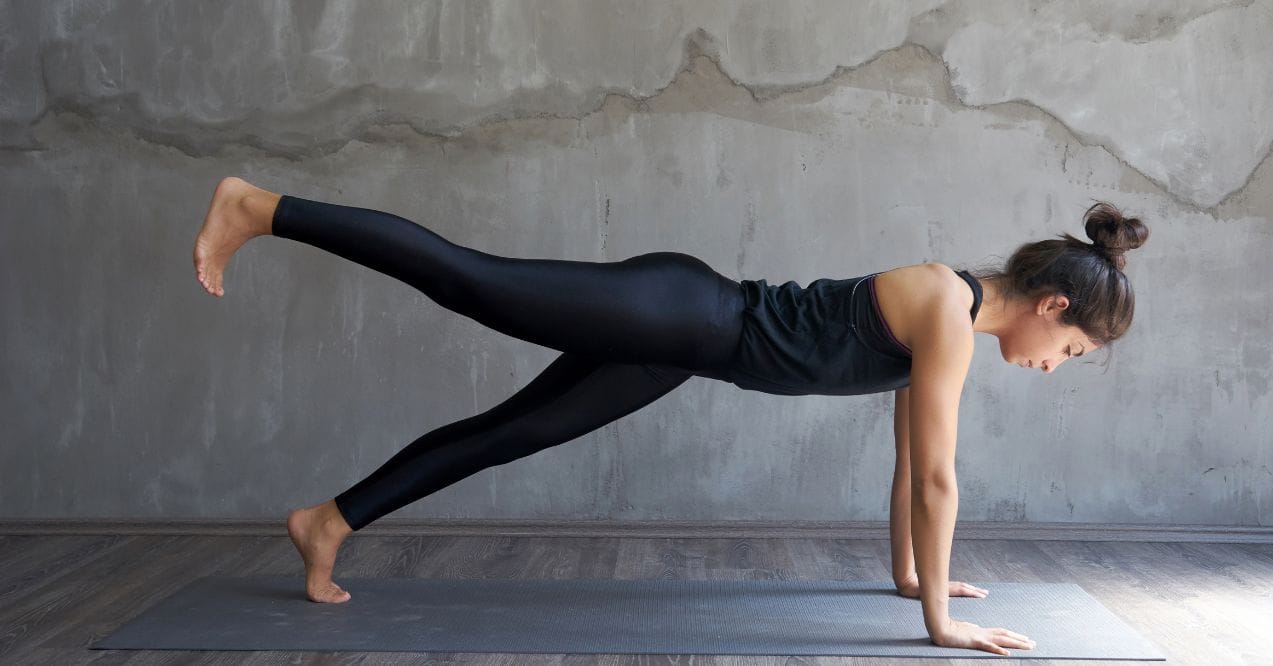How to Speed Up Your Recovery Before Physical Therapy?
If you’re wondering how to speed up your recovery before physical therapy, the good news is there’s plenty you can do to get your body ready. Getting ahead of the healing process may help you show up to your first session with more mobility, less stiffness, and a better chance of progress. While physical therapy is key in the long term, your habits in the days or weeks beforehand could make a real difference. This is especially true if you’re also dealing with joint issues like knee and ankle pain, which can complicate the recovery timeline.

What causes muscle strains?
A muscle strain happens when fibers in your muscle get overstretched or torn – usually during sudden movements, overuse, or poor warm-ups. Strains can range from mild to severe, depending on how many fibers are involved. They often happen in active muscles like hamstrings, calves, or the back.
Strains are more likely when muscles are tired, tight, or loaded with more weight than they can handle. That’s why they often show up during a workout or intense movement. Small tears may cause soreness, while larger ones could trigger swelling, bruising, or reduced strength. Some people also explore natural aids like herbs for muscle recovery to support their healing process.
How to speed up your recovery before physical therapy?
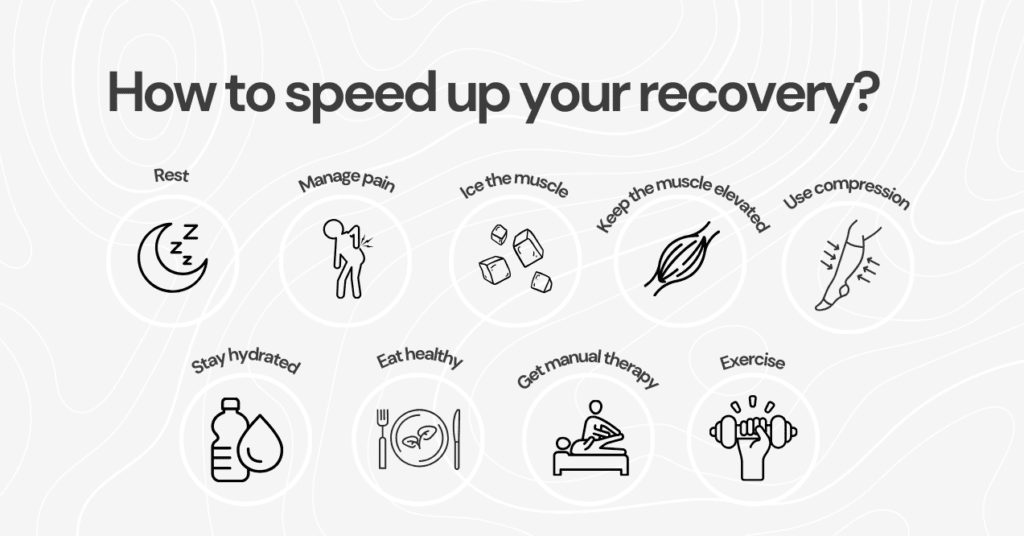
Recovery before therapy is all about reducing stress on the muscle while promoting circulation, reducing swelling, and supporting tissue repair. The goal is to arrive at your physical therapy sessions in the best possible shape – whether that means less pain, more mobility, or fewer restrictions.
Here are practical ways to support your muscle’s recovery process early on:
Rest
Taking it easy may help your muscle recover without added stress. Early rest helps protect the area and may prevent additional tearing. That doesn’t mean staying immobile, but it does mean avoiding strenuous activity, especially anything that causes discomfort.
You might need to dial down your usual training or replace it with lighter movement. Pay attention to lingering soreness, tightness, or fatigue – they may signal you’re pushing too hard. If that sounds familiar, you might also relate to Why Are My Legs So Heavy After a Workout?
Manage pain
Pain may be part of a muscle strain, but it shouldn’t dominate your day. Ice, heat (after a few days), or over-the-counter options can help ease discomfort. Some people also use light massage or mobility work to reduce tightness.
If pain remains sharp, limits movement, or worsens over time, it might be worth checking in with a specialist. The idea is to keep pain in a manageable range so recovery activities don’t become a setback.
Ice the muscle
Applying ice to the area can reduce swelling and dull soreness – especially in the first 48–72 hours. A cold pack wrapped in cloth for 15–20 minutes a few times a day may help you feel more comfortable and slow inflammation.
Some people alternate ice and gentle compression for better results. Ice won’t fix the strain, but it may help manage early symptoms and ease the path toward rehab.
Keep the muscle elevated
Elevation may assist in reducing fluid buildup, especially if swelling is visible. The idea is to raise the injured area above heart level so fluid drains more easily. This may help reduce pressure and sensitivity in the muscle.
It’s especially useful in the early stages of recovery or after movement. Try propping your leg or arm with pillows while resting.
Use compression
Gentle compression around the strained muscle might limit swelling and give the area more support. You can try sleeves, wraps, or compression garments – just avoid wrapping too tightly.
Some compression gear also increases warmth, which may encourage light blood flow. This is more of a comfort strategy, but it can pair well with rest and elevation.
Stay hydrated
Your muscles are made mostly of water. When you’re dehydrated, everything – from mobility to circulation – may be affected. Drinking enough water supports tissue elasticity and can keep fluids moving through your body.
Aim for consistent hydration throughout the day, especially if you’re recovering from a tough training session or injury.
Eat healthy
A balanced diet with whole foods may give your body the raw materials needed to support muscle tissue. Focus on meals that include lean protein, leafy greens, healthy fats, and antioxidant-rich foods like berries.
Some people add anti-inflammatory foods like turmeric, ginger, or fatty fish. While no single food will fix a muscle strain, good nutrition supports your body’s repair systems.
Get manual therapy
Hands-on techniques like massage or light tissue work may help relieve tightness and support circulation. Depending on the stage of your strain, this might include light massage, cupping, or myofascial release.
Always work with a qualified provider, especially if pain is still sharp. Manual therapy is typically more helpful once inflammation goes down.
Exercise
Once pain has eased, gentle movements or range-of-motion exercises may help keep surrounding tissues active. Avoid pushing into discomfort. Early activity might include ankle pumps, leg lifts, or active stretching – under guidance if needed.
Talk to a PT or trainer about what’s safe for your strain. Movement may reduce stiffness and help prepare your body for therapy work ahead.
Signs of a torn muscle
Some strains feel like simple soreness. Others might be more serious. If you’re unsure what you’re dealing with, here are signs of a torn muscle that may signal a more severe issue.
Muscle weakness
A clear drop in strength – especially one side compared to the other – might mean more muscle fibers are affected. If lifting or pushing becomes harder than usual, especially without pain, it may be more than mild fatigue.
Sudden pain when using the affected muscle
A sharp, stabbing pain during a movement can indicate a muscle tear or strain. If that pain limits your motion right away or causes you to stop an activity suddenly, pay close attention.
Pain while rest
Mild soreness usually fades during rest. But if pain sticks around even when you’re doing nothing, it could suggest deeper inflammation or a moderate-to-severe strain. Heat, swelling, or discoloration may also show up.
How long does a muscle strain take to heal?
Muscle strain recovery time varies by severity. Here’s a general breakdown:
- Mild strains may improve within 1–2 weeks
- Moderate strains might take 3–6 weeks
- Severe strains (including tears) can take several months
It also depends on age, activity level, and how well you care for the injury early on.
If you’re looking for extra support during this recovery window, Muscle Recovery by Trumeta is designed to help you stay on track. This thoughtfully formulated supplement combines ingredients that support circulation, reduce post-workout fatigue, and promote relaxation – making it a great fit for anyone easing back from a strain.

Conclusion
Recovering from a muscle strain can be frustrating, especially when it puts your routine on pause. But taking steps to support your body early on can help you show up to physical therapy in a better state – mentally and physically.
From rest and hydration to movement and nutrition, the habits you build in the early days may shape how well you progress later. These strategies won’t guarantee instant results, but they may help reduce discomfort and support your recovery timeline. Paying attention to early signs of a torn muscle and using strategies that ease tension, stiffness, and inflammation puts you in a stronger position to begin therapy with confidence.
Not at first. Stretching too early may slow recovery. Wait until pain decreases, then ease into gentle movement or stretching under guidance.
Ice during the first 48–72 hours. Switch to heat after swelling subsides to ease stiffness and support circulation.
Rest a few days for mild strains. More severe cases may need 1–2 weeks. Start when pain and swelling have improved.
Advertisement. This site offers health, wellness, fitness and nutritional information and is designed for educational purposes only. You should not rely on this information as a substitute for, nor does it replace, professional medical advice, diagnosis, or treatment. If you have any concerns or questions about your health, you should always consult with a physician or other health-care professional. Do not disregard, avoid or delay obtaining medical or health related advice from your health-care professional because of something you may have read on this site. The use of any information provided on this site is solely at your own risk.
